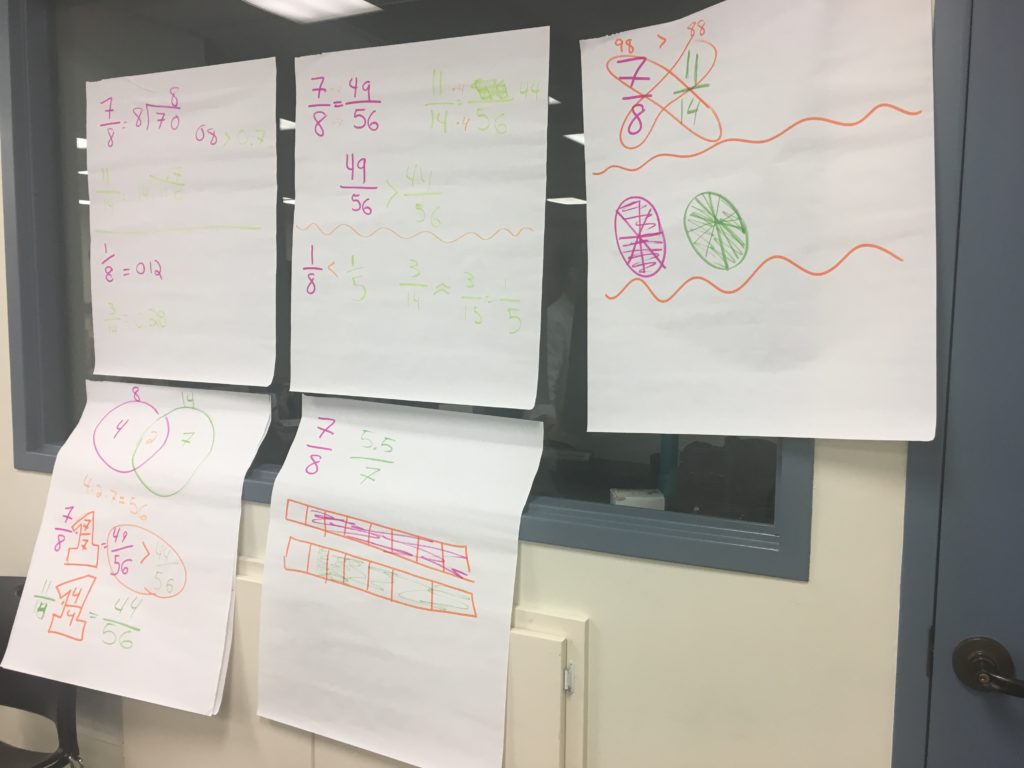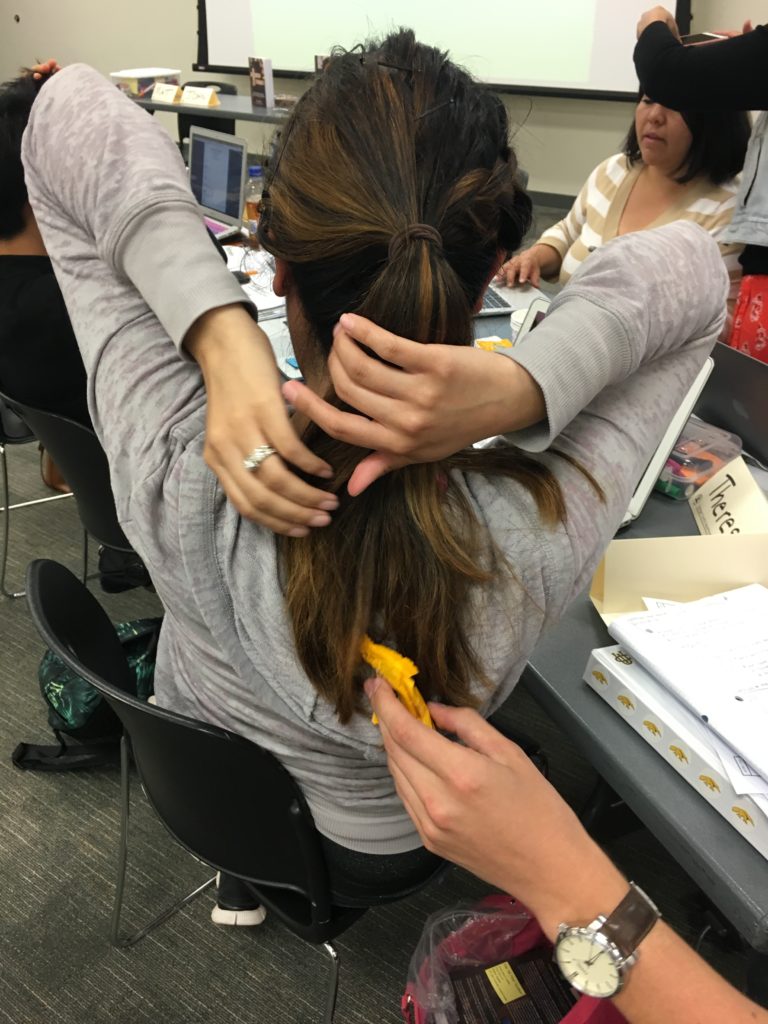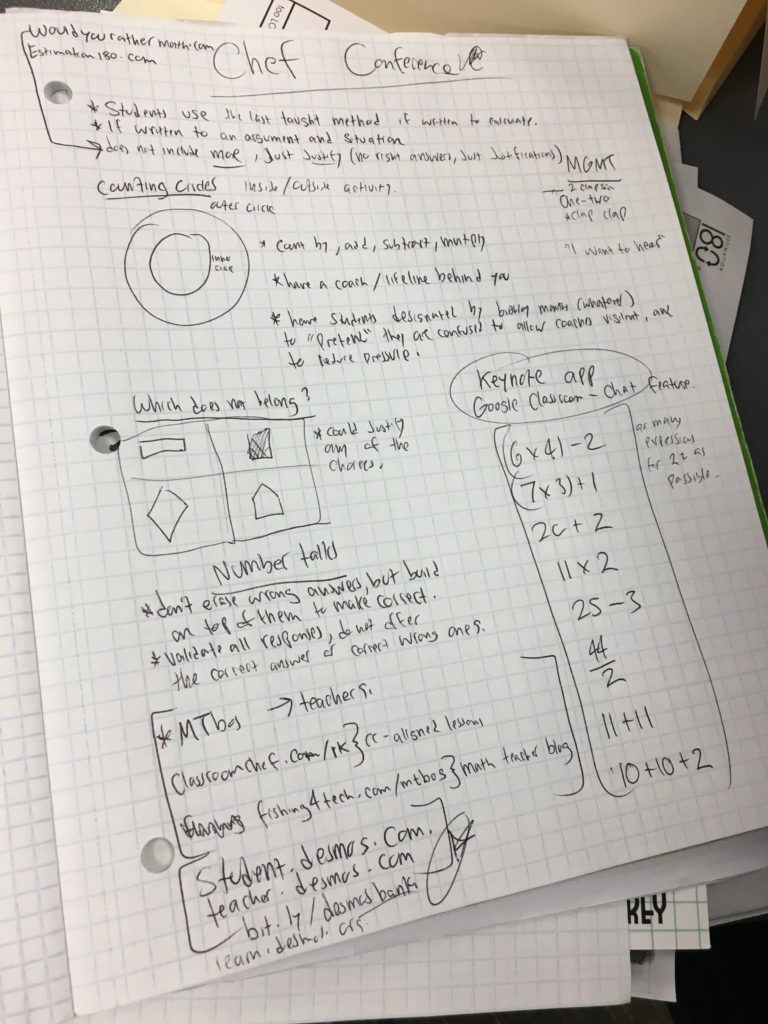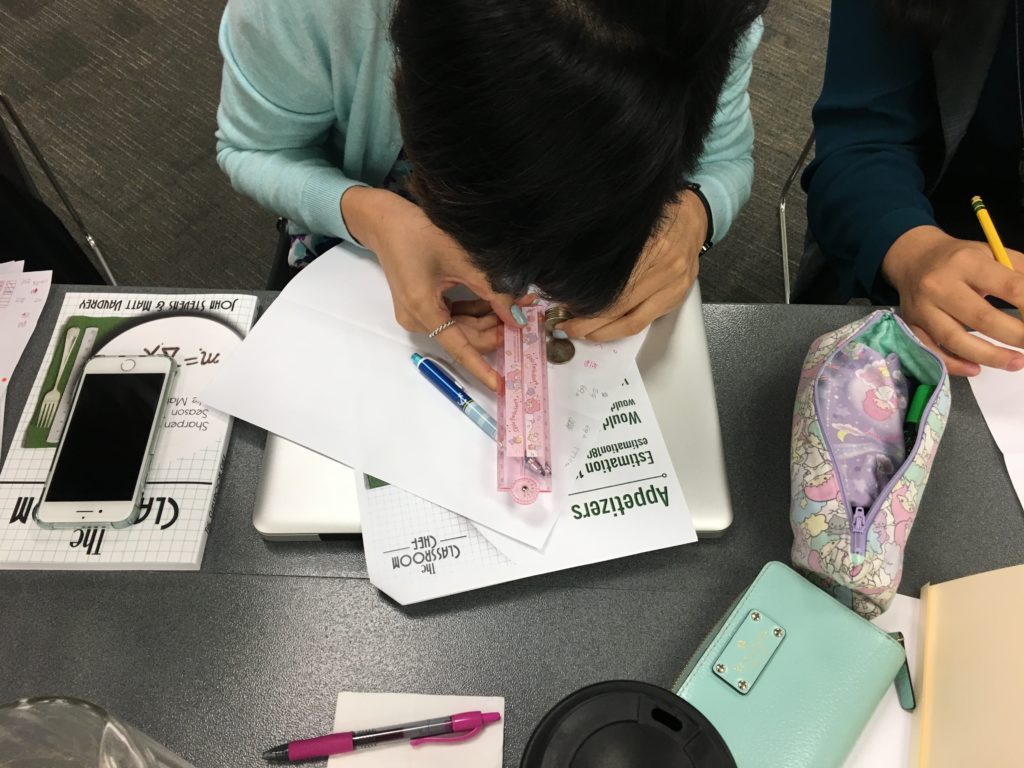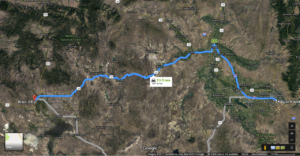This is the furthest #ClassroomChef ever, and possibly the coldest.
Bring your appetites, Albany! pic.twitter.com/VPtKbdOcmu
— Classroom Chef (@classroomchef) January 4, 2018
Temperatures below zero.
Snow on the ground. Lots of snow.
Bomb cyclones on the way.
Middle of the week.
Up to 6 hour drives.
Away from the teachers, the students, and the schools.
There were a lot of reasons for a group of over 50 instructional coaches to be upset about meeting on a cold day in January, especially since many of them had long drives or flights to get here. As Theresa, one of the leaders of the day, put it, “We’re New Yorkers; we find a way to get it done.”
And so they did. The group, consisting of full-time classroom teachers, instructional coaches, and administrators, all came to Albany, New York for a full day feast of The Classroom Chef. Theresa started us off with an around-the-world set of introductions, including the one word to describe us for 2018. It was great to hear so many commonalities in the room. We as coaches are overwhelmed, inspired, invigorated, and seeking balance. That was clear in this group as well.
As is customary, we kicked off the morning by using a pitcher of water and irregularly-sized cups to build a culture of risk-taking through estimation. With a few laughs and a whole lot of curiosity, the room was captivated to find out just how many cups will it take to send the pitcher from empty to overflowing?
How many cups of water poured will it take to overflow the pitcher? @classroomchef pic.twitter.com/NgcMlNdMqB
— Kathleen Agnello (@kathleenagnello) January 4, 2018
This group, though, was different. Most of the work that we have done with The Classroom Chef has been with classroom teachers. We are giving educators ready-to-implement ideas from all over the Internet, and they get excited about the newfound ways to engage students. With a group of mostly instructional leaders, we weren’t sure how it would be received, but it didn’t take long to convert a room of instructional leaders into eager students; they were fantastic! And to top it off, over half had already read the book, and arrived ready with real questions and real pushback.
Homeboy @coach_pgreene has REALLY gotten into #classroomchef.
And yes, those are color-coded. pic.twitter.com/bGckUFfpc4
— Classroom Chef (@classroomchef) January 4, 2018
As we made our way through toilet paper, Red Vines (did you know they don’t have Red Vines in New York?! This is a shame. OK fine, Twizzlers.), pie, quarters, and pencils, there was an increased emphasis on the pedagogy of what we were doing and less on the content itself. Attendees were asking about specific teacher moves, getting deep into the “Why” of what we were doing, and obviously translating our tasks into something they could immediately take back to schools of teachers. Watching this unfold was phenomenal.
While we have traveled the country to bring The Classroom Chef to teachers, this was our first venture into New York. In January, especially.
The reality of this struck during lunch, when we were approached about the news of an incoming storm and the pending closure of the building in which we were working. Now, instead of a 4:00 ending time, we needed to end by 3:00. If you have been to one of our workshops, you know that things are timed out, dialed in, and planned in advance.
YOU WANT US TO CUT AN HOUR?!
No, the weather demands that we do.
Making a quick pivot, we decided to cut down how much time we dedicated to Desmos. Folks, this is a full day workshop by itself (Talk to us for more) so cutting it from an hour to 40 minutes was painful. What do we keep? What do we remove? We decided that this group needed to know about Activity Builder and Polygraph, as well as the Desmos Bank, so we flew through it with a disclaimer that it was going to go fast. Did we mention that this group was awesome? They took it all in stride, taking risks and engaging in the content throughout the day.
And when The Scorpions began to play and the Mullets began to appear, the group turned to giggles, tweets, and murmurs of, “This is so weird. I love it.”
Math using Mullet ratios! Engaging and fun! @classroomchef pic.twitter.com/fEeBgYrdNI
— Kathleen Agnello (@kathleenagnello) January 4, 2018
With the clock staring down our final course, dessert, we made the conscious decision to truncate the assessment piece, both with students and with teachers. With about 8 minutes to spare, we ended and shared some wonderful conversations as attendees reflected on the day, shared their own experiences, and challenged us with tough questions.
The biggest takeaways from our time with instructional leaders in upstate New York are:
- When you need to get it done, you get it done.
- We should be inspiring and energizing our instructional leaders and coaches just as much as we work to do so for our teachers.
- Brave risk-taking sometimes means pushing your presenter to clarify a point; they should be able to handle a little heat in their kitchen (Thanks for that, folks).
No matter your climate or weather conditions, we would love to chat about how we can help your team take risks and make math a more meaningful experience for your students. Please reach out by completing a reservation request and keep the conversation going. Thanks for stopping by!

